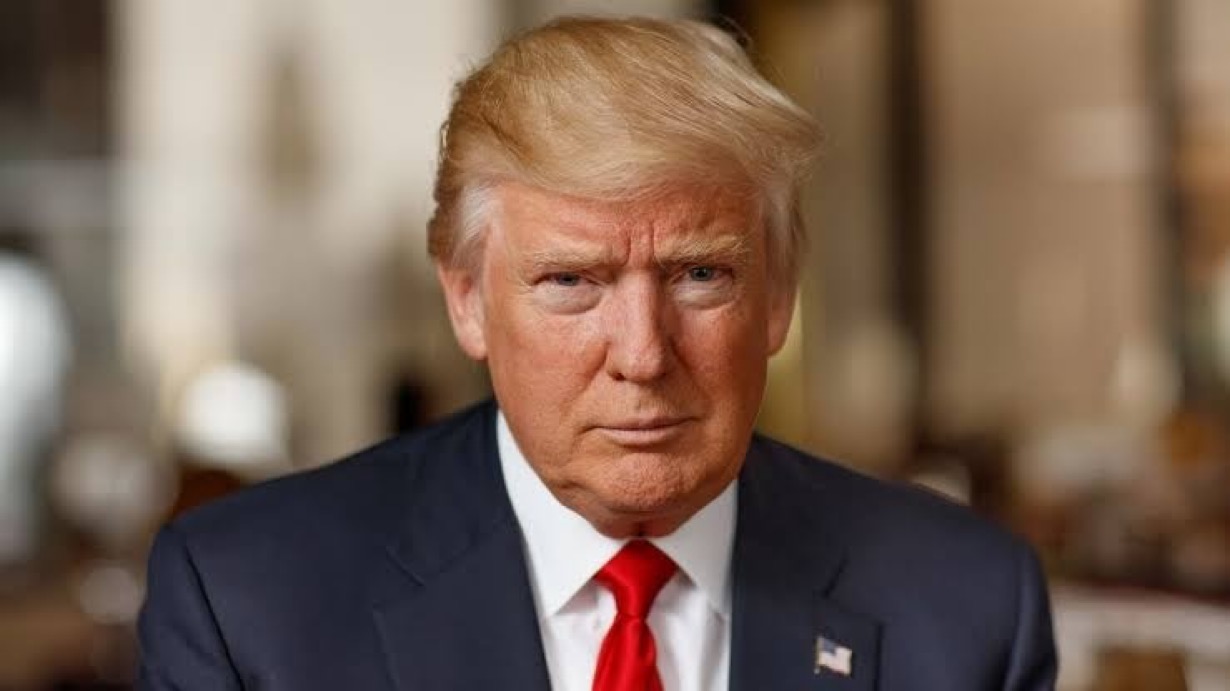
Trump Shocks Global Markets with 90-Day Pause on Tariffs, Increases China Tariffs by 125%

In a surprise move that has sent shockwaves through the global economy, former U.S. President Donald Trump announced a drastic shift in his trade policy towards China. The controversial figure, who has long been a proponent of aggressive economic policies, declared a 90-day pause on reciprocal tariffs, while also ordering a staggering 125% increase on existing tariffs on Chinese imports, effective immediately. The announcement has already begun to stir up tensions on both sides of the Pacific, with global markets reacting nervously to the uncertainty this new direction introduces.
The announcement, made through a series of statements from Trump’s office, outlines a sharp escalation in the U.S.-China trade war, which has been a hallmark of his tenure as president. Despite being out of office for over a year, Trump’s influence on U.S. policy remains significant, with many speculating that his actions could be aimed at solidifying his position ahead of potential future political campaigns. His decision to implement such an aggressive economic strategy comes at a time when both the U.S. and China are navigating a complex geopolitical landscape, filled with growing economic challenges and shifting alliances.
Trump's latest move is in stark contrast to previous diplomatic efforts that had attempted to de-escalate the trade tensions between the world's two largest economies. The 90-day pause on reciprocal tariffs, a measure aimed at reducing tensions, was expected to pave the way for renewed trade talks. However, the immediate 125% hike in tariffs on Chinese goods has created a new level of uncertainty, suggesting that Trump’s intentions go far beyond a temporary pause. The increase in tariffs is seen as a direct shot across the bow of China, signaling that the U.S. is prepared to take further steps to counter what it perceives as unfair trade practices.
This dramatic shift in policy raises significant questions about the long-term implications for global trade and diplomacy. With China being one of the U.S.'s largest trading partners, the move is likely to have far-reaching consequences. Industries in both countries, and around the world, will be closely watching how businesses and consumers respond to the new tariff structure. Experts predict that the price of goods could rise dramatically as the U.S. government seeks to compensate for the increase in costs brought on by the tariff hike. Chinese manufacturers, too, are bracing for the fallout, as the U.S. market becomes even less predictable for their exports.
In his statement, Trump justified the tariffs as necessary to protect American industries and jobs, emphasizing his long-standing belief that China’s trade practices had led to an unfair imbalance in favor of Beijing. “For too long, China has taken advantage of the United States, and this tariff increase will level the playing field,” Trump stated. He went on to claim that the previous administration’s attempts at negotiations had been weak, and that only through decisive action could the U.S. begin to restore its economic dominance.
While Trump’s supporters argue that his economic nationalism and tough stance on China were central to his success as president, critics contend that his policies ultimately hurt American consumers and disrupted global supply chains. The trade war initiated under his leadership led to higher costs for U.S. businesses and consumers, particularly in industries like electronics, agriculture, and manufacturing, where China has a dominant presence. The new tariff increase, however, is seen by many as a reckless escalation that could backfire, potentially triggering retaliatory measures from China and further destabilizing global markets.
This new round of tariffs is also likely to complicate relations between the U.S. and its allies. Countries that rely on trade with both the U.S. and China may find themselves caught in the middle of this new economic confrontation. In particular, European Union officials have expressed concern that Trump's aggressive tactics could undermine efforts to achieve a more balanced and cooperative global trade environment. They have long been critical of Trump’s “America First” policy, which they argue has led to the fracturing of established trade alliances and increased global instability.
China, for its part, has yet to respond publicly to Trump’s latest announcement. However, the Chinese government has previously warned that any further escalation in tariffs would have severe consequences for both countries, and would likely lead to a prolonged period of economic instability. During the initial stages of the U.S.-China trade war, Beijing retaliated by imposing tariffs of its own on U.S. goods, particularly agricultural products, which had a direct impact on American farmers. The Chinese government is widely expected to use similar measures to respond to this latest move by Trump, which could further exacerbate tensions between the two nations.
This latest development is also a reminder of the deep-rooted issues that continue to drive the U.S.-China trade dispute. At the heart of the conflict is the question of intellectual property rights, market access, and China’s approach to state-supported industrial policies. The U.S. has long accused China of unfair trade practices, such as intellectual property theft, forced technology transfers, and currency manipulation. These issues have led to the imposition of billions of dollars in tariffs over the past several years, with limited progress made towards resolving the underlying problems.
While the 90-day pause on reciprocal tariffs may offer a temporary respite from the escalating trade war, Trump’s decision to increase tariffs by 125% signals a clear desire to exert further pressure on China. The move may be seen as an attempt to force China to the negotiating table, but it also raises the possibility of a prolonged period of economic uncertainty. If history is any indication, the consequences of such a drastic policy shift are likely to be felt well beyond the borders of the U.S. and China, impacting global supply chains, consumer prices, and international relations.
As the situation continues to unfold, it remains unclear how China will respond to Trump’s latest gambit. The Chinese government has repeatedly stated that it is committed to fair and equitable trade, but it has also shown a willingness to defend its economic interests in the face of external pressures. The coming weeks and months will likely see a tense diplomatic standoff, as both sides weigh their options and prepare for what could be another round of intense economic conflict.
For now, businesses and consumers worldwide will have to navigate the uncertainty that Trump’s announcement has introduced. While the 90-day pause may offer a temporary breathing space, the 125% tariff hike is expected to create ripples throughout the global economy that will be felt for years to come. As global markets brace for impact, the question remains: will this aggressive move by Trump lead to the desired outcome, or will it escalate the trade war to new, unpredictable heights? Only time will tell.


